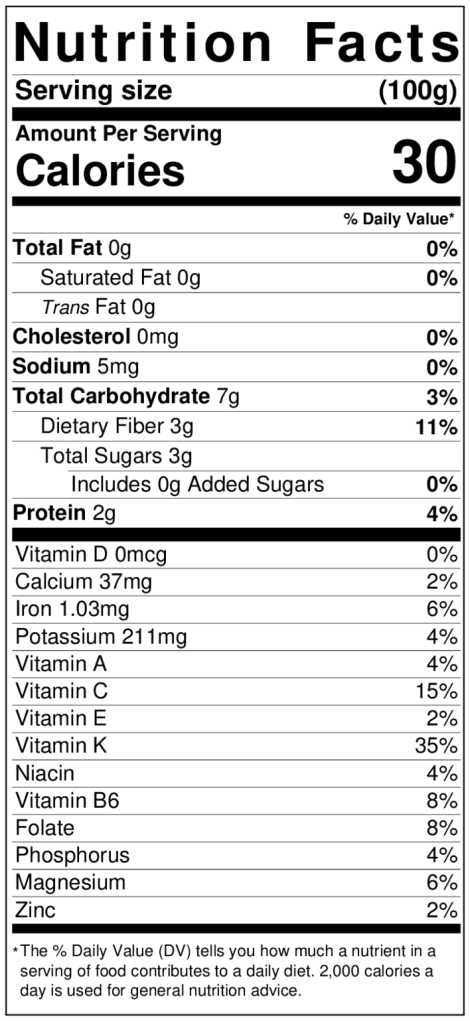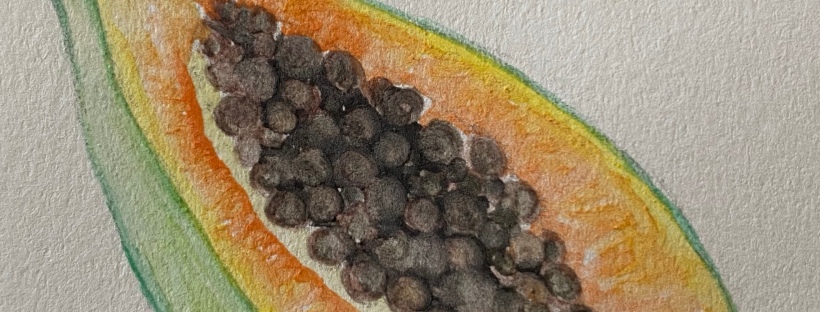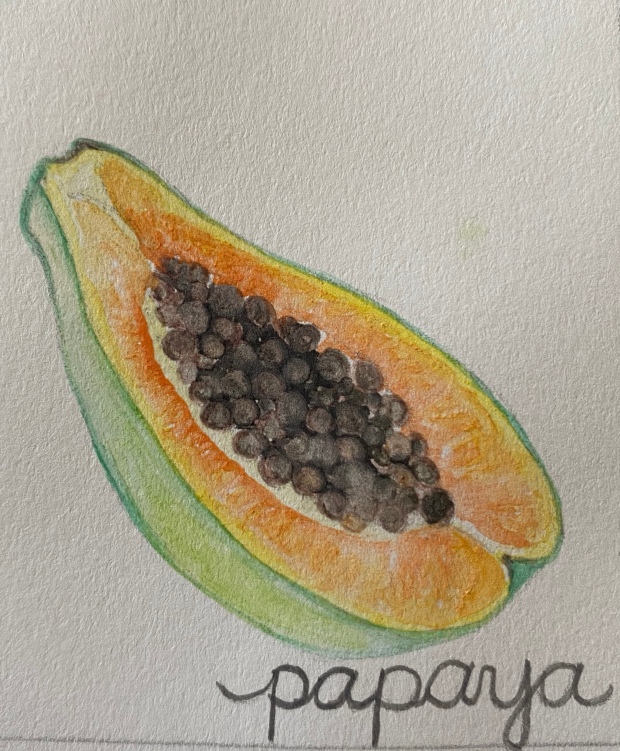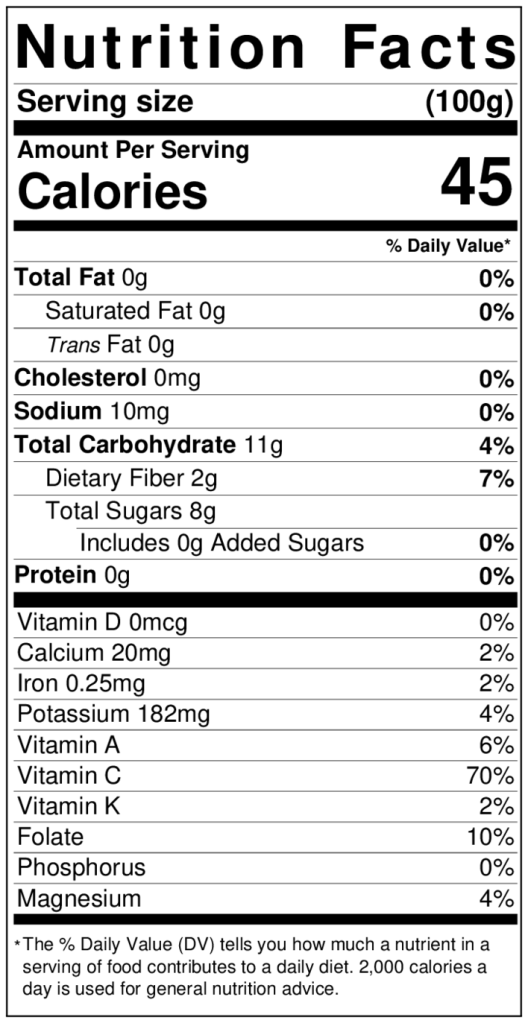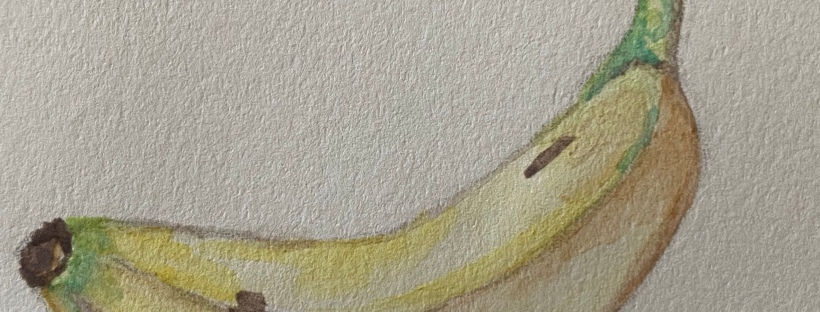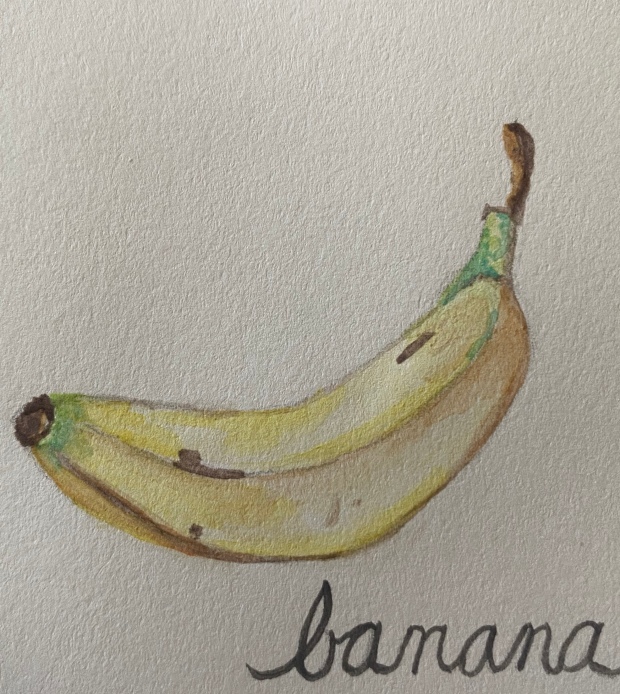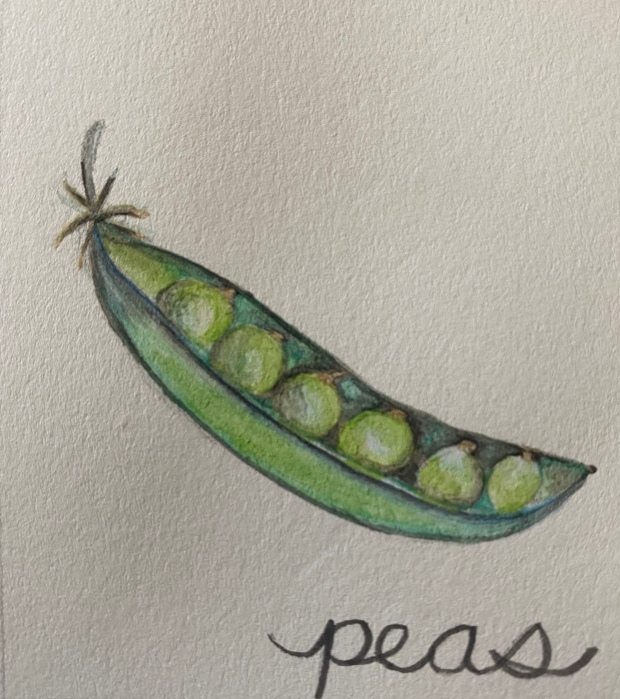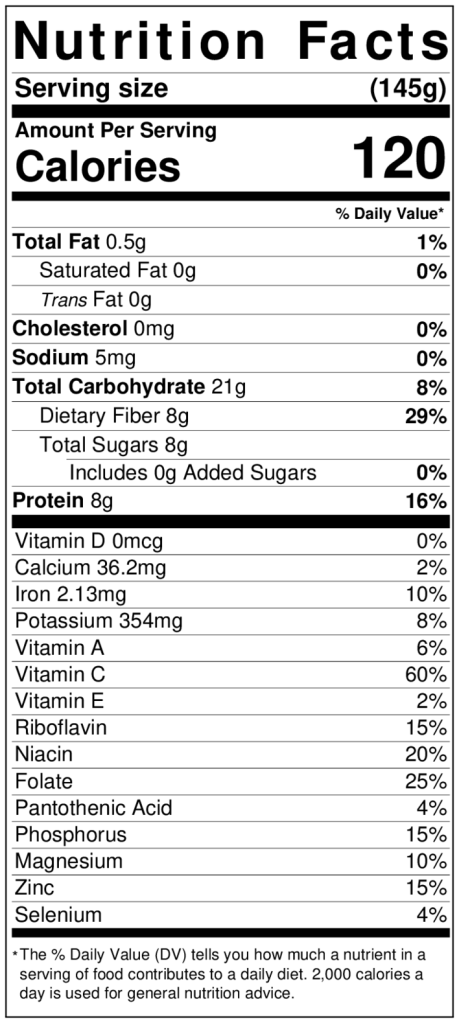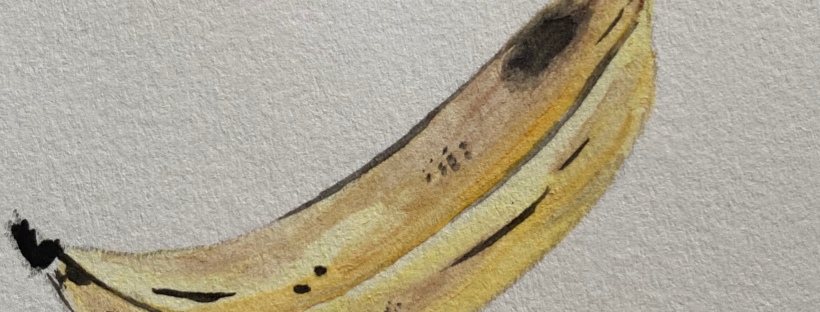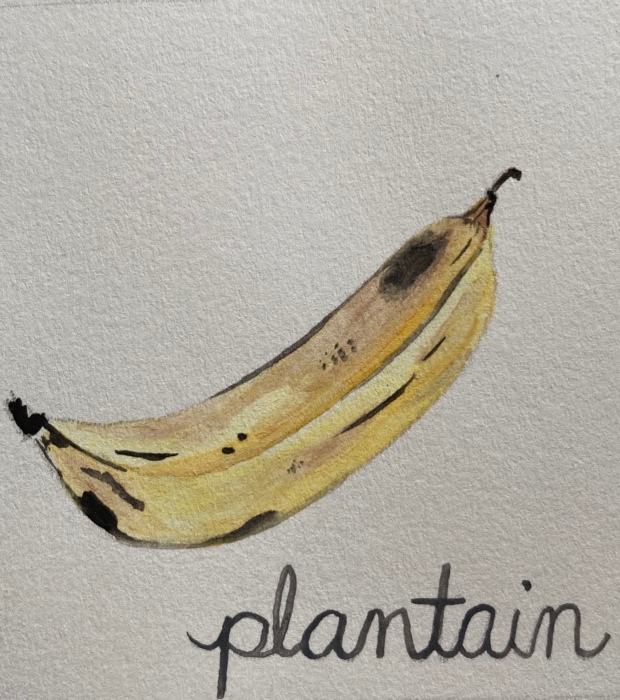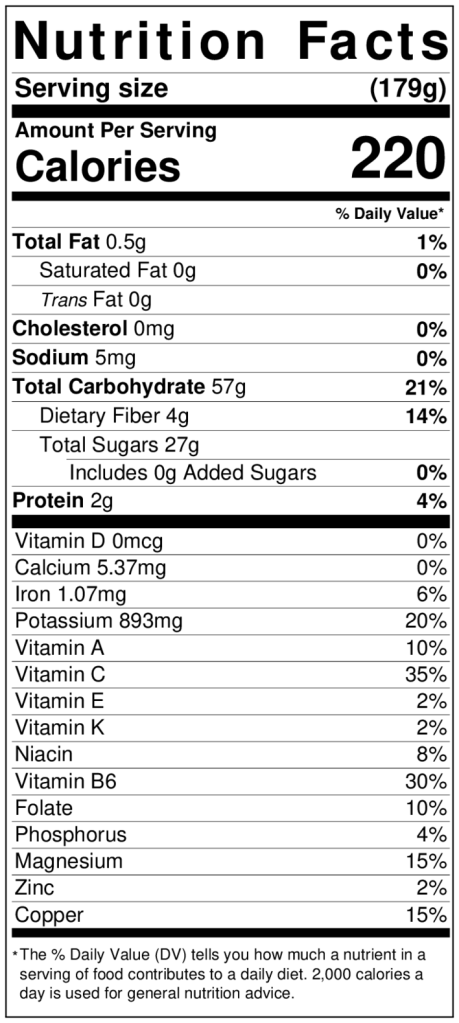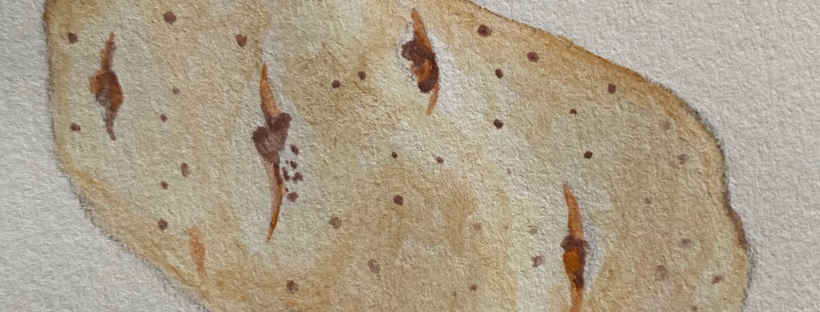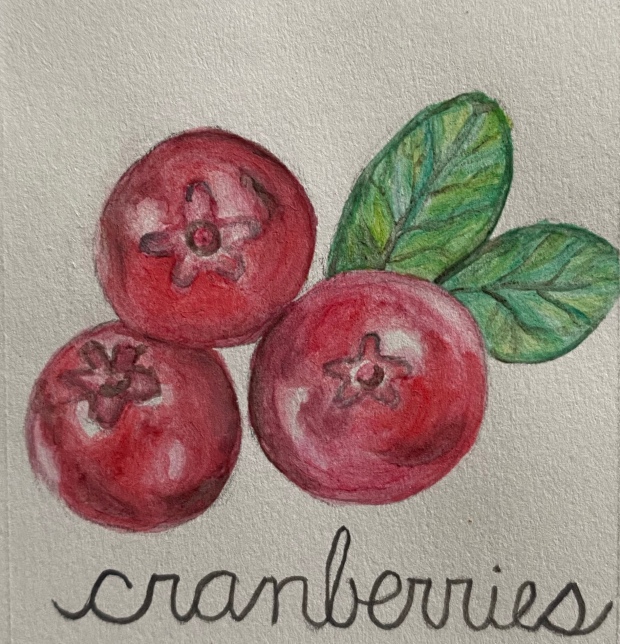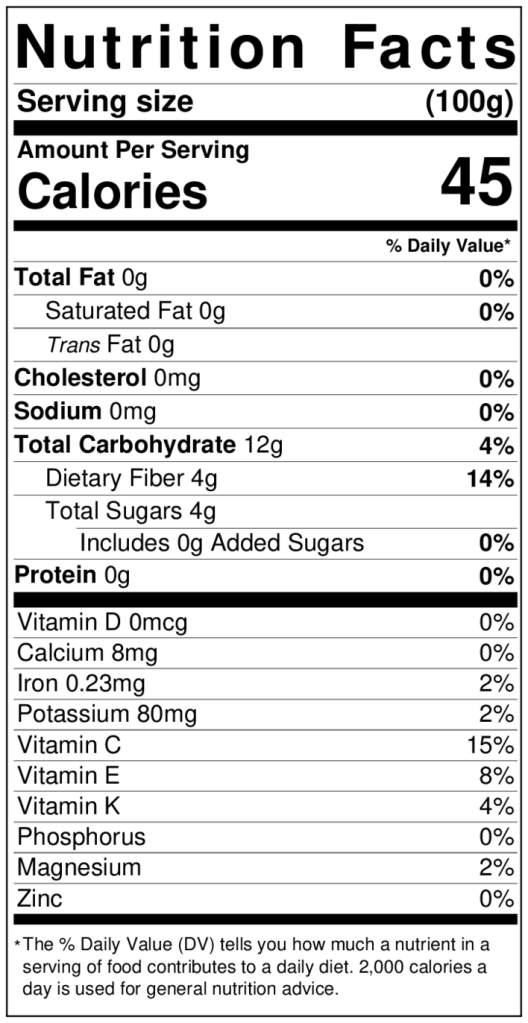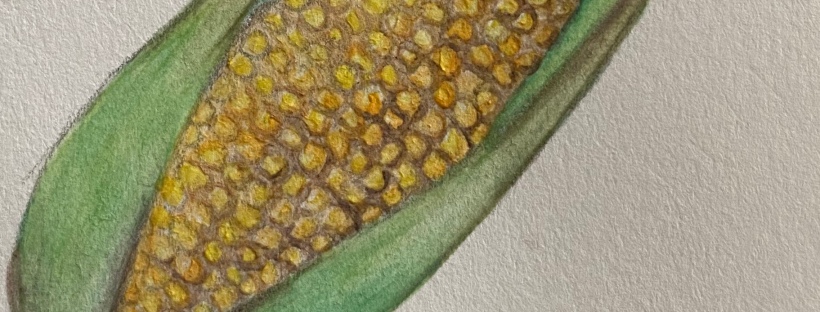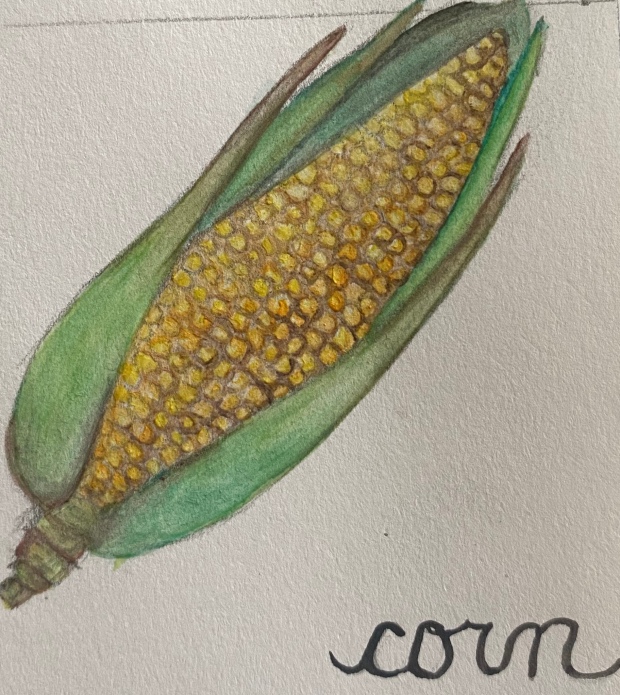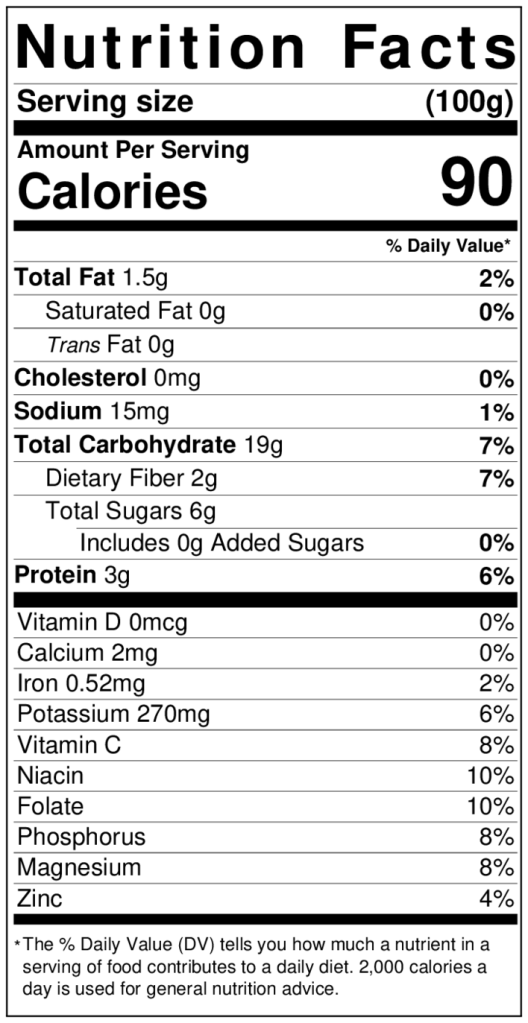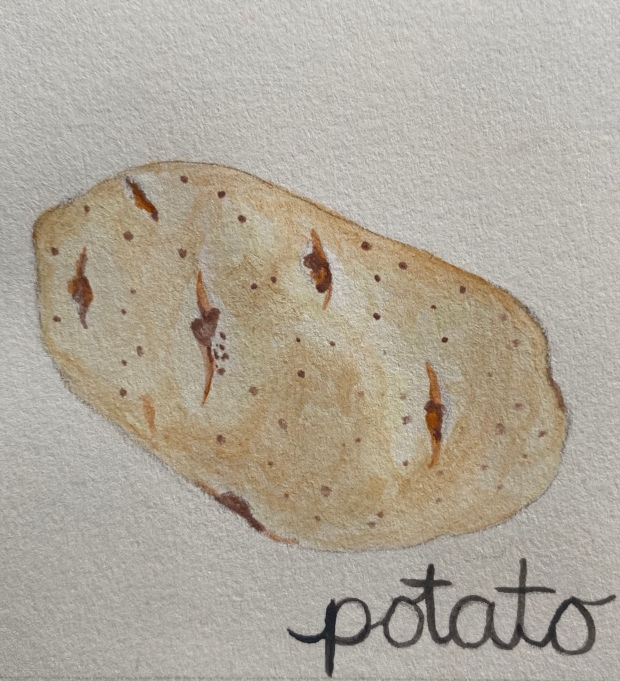
“Potato,” watercolor.
The potato: a global kitchen staple; an ancient, reliable food source. It is documented as being cultivated first by the Incas back in 8,000-5,000 B.C., in the region currently known as Peru/Bolivia.
Indigenous people went through a lot cultivating the potato during its formative years. Here’s what Smithsonian Magazine had to say:
Wild potatoes are laced with solanine and tomatine, toxic compounds believed to defend the plants against attacks from dangerous organisms like fungi, bacteria and human beings. Cooking often breaks down such chemical defenses, but solanine and tomatine are unaffected by heat. In the mountains, guanaco and vicuña (wild relatives of the llama) lick clay before eating poisonous plants. The toxins stick—more technically, “adsorb”—to the fine clay particles in the animals’ stomachs, passing through the digestive system without affecting it. Mimicking this process, mountain peoples apparently learned to dunk wild potatoes in a “gravy” made of clay and water. Eventually they bred less-toxic potatoes, though some of the old, poisonous varieties remain, favored for their resistance to frost. Clay dust is still sold in Peruvian and Bolivian markets to accompany them [1].
By the 1500s, like other foods, Spanish conquistadors took the potato back over to Europe where it took around 40 years for it to spread across the continent.
And then in much later years, the Colorado Potato Beetle began ravaging potato plants and affecting production. Their presence led to the creation of the first pesticide used by farmers: arsenic. Over time, alternative pesticides were used to ward off hungry critters that rendered the crops useless in markets and grocery stores.
Now, the potato is one of the top 5 most important crops in the world. There are more than 4,000 native varieties of it–most of which come out of Peru–and 180 wild varieties too. Among those varieties are different types that are commonly used in different ways for cooking and baking. From russet, to white, to red, to yellow, to purple, and fingerling, you’ll notice a difference in texture of flesh amongst the types.
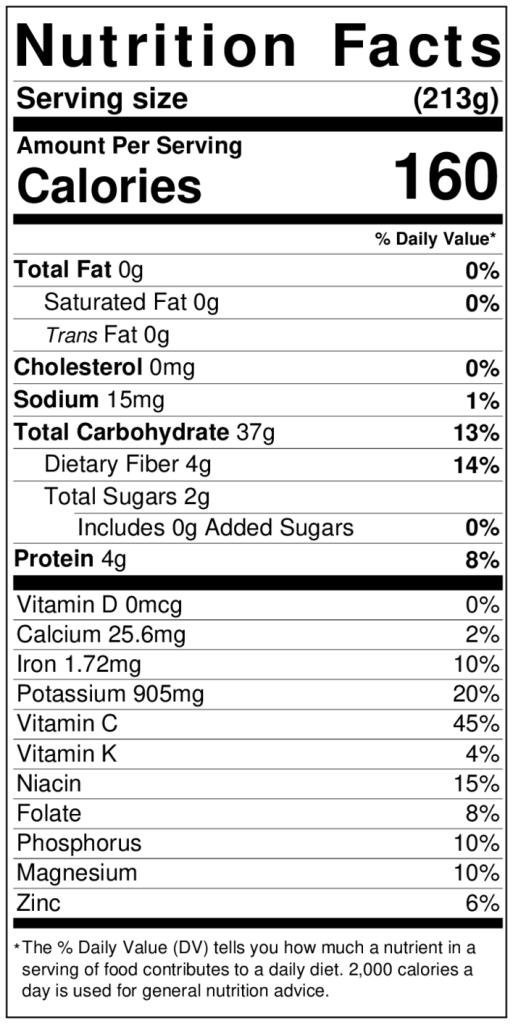
Potato Nutrition Label. Created by Keanna.
The potato is loaded with potassium (more than a banana even) and vitamin C. Cooking the vegetable lowers the amount you’d take in, however cooking them with the skin on decreases the amount of nutrition lost in the process.
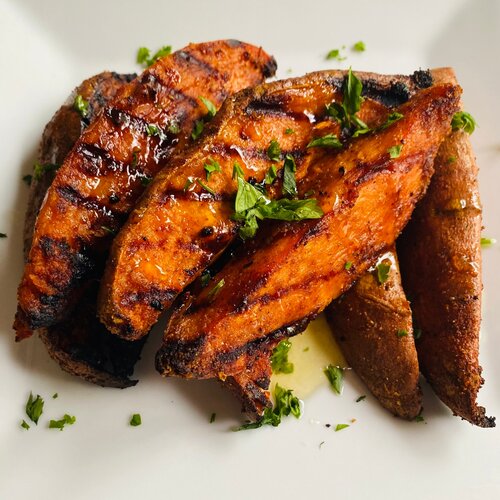
Duck Fat Grilled Sweet Potatoes. Tanorria’s Table.
If you’re like me, love potatoes and want a new way to enjoy them, I think you’ll like trying this recipe from award-winning personal Chef Tanorria Askew. Duck Fat Grilled Sweet Potatoes. Get the recipe here.
—
[1] “How the Potato Changed the World,” Mann, Charles C. Smithsonian Magazine.
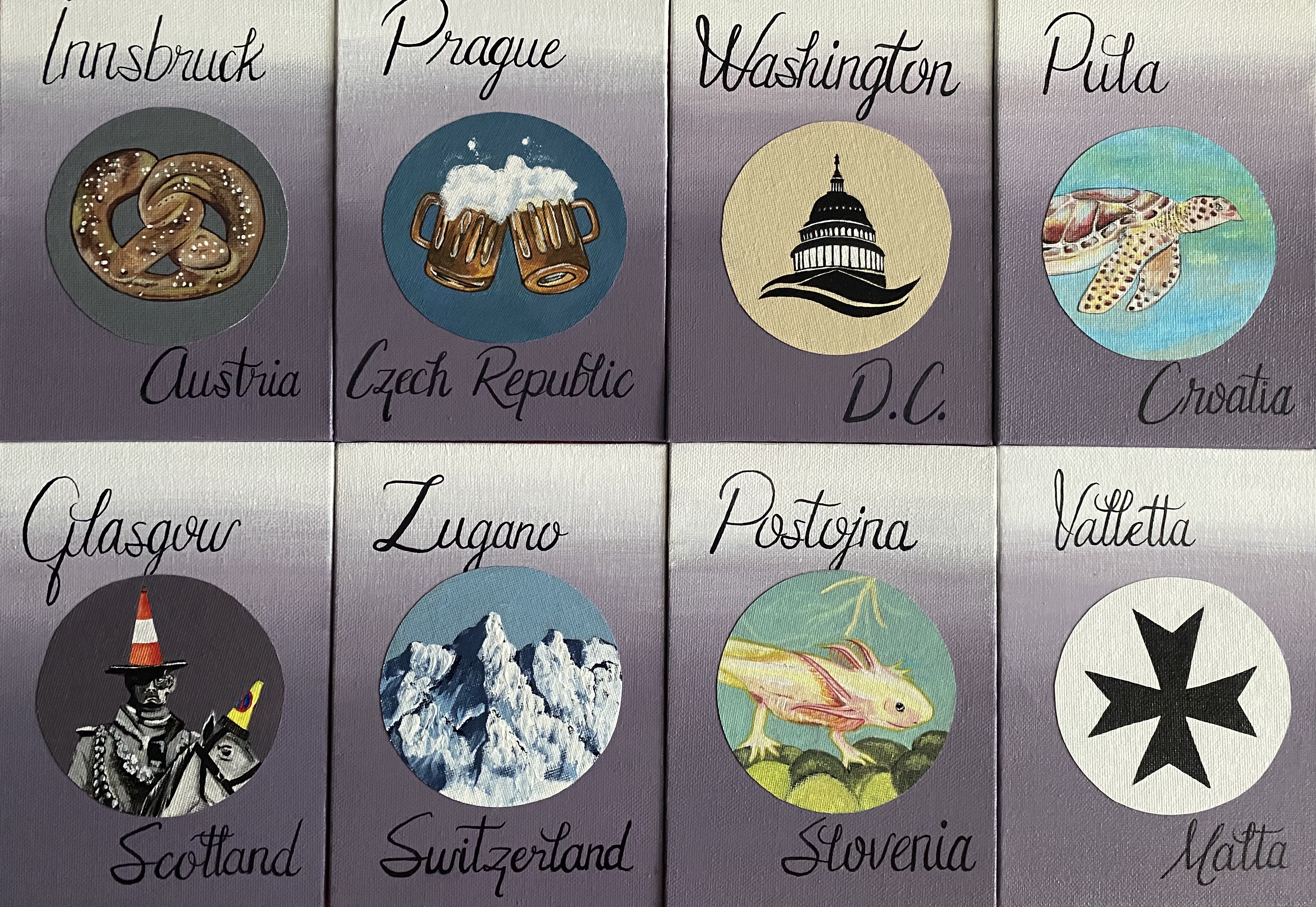

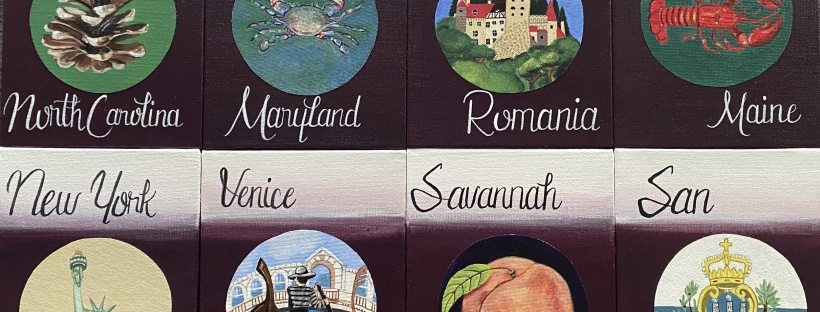
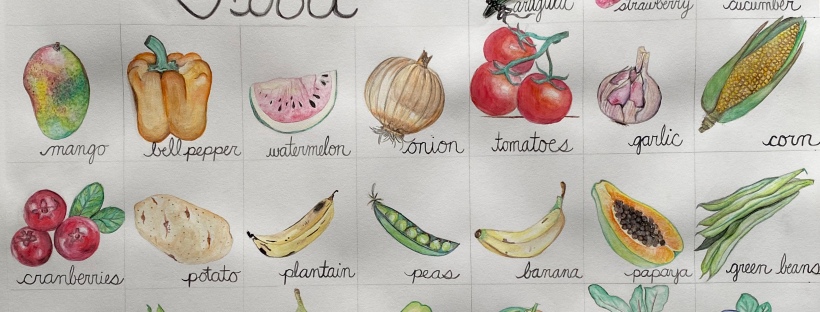
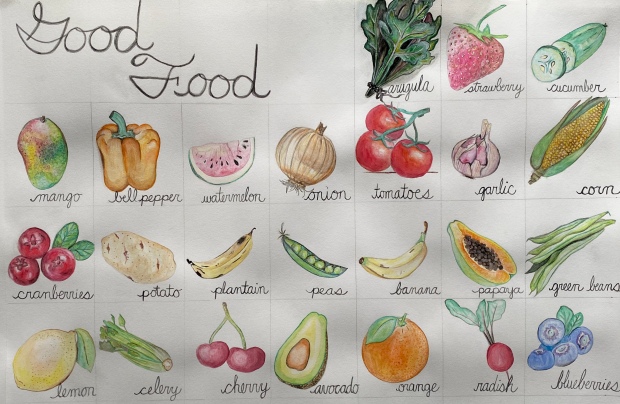
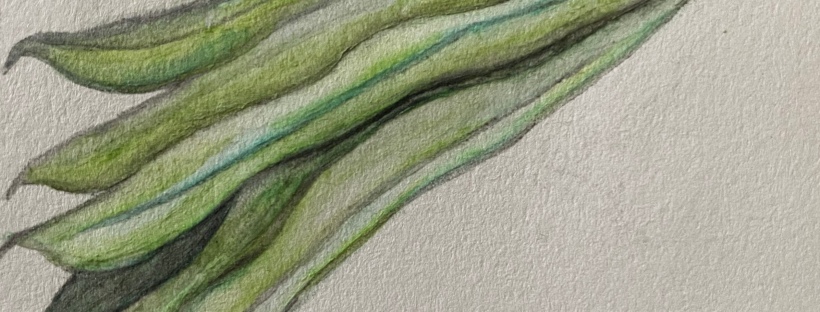
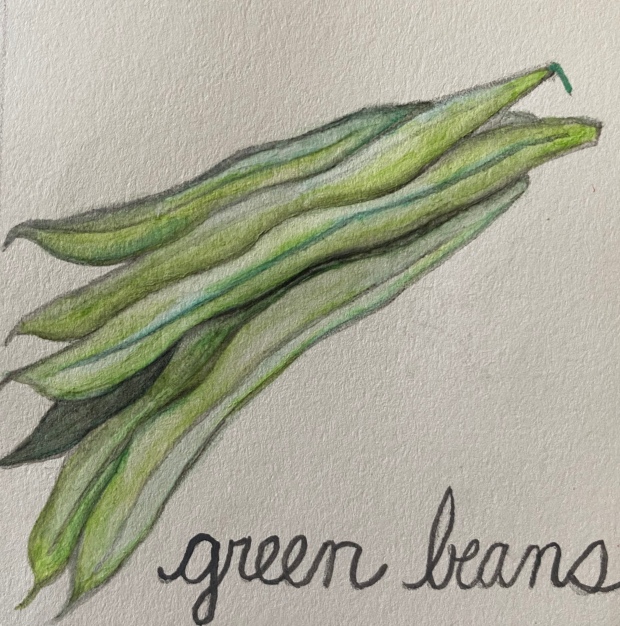
:max_bytes(150000):strip_icc()/Different-Beans-573dcf7f5f9b58723d3f492c.jpg)
